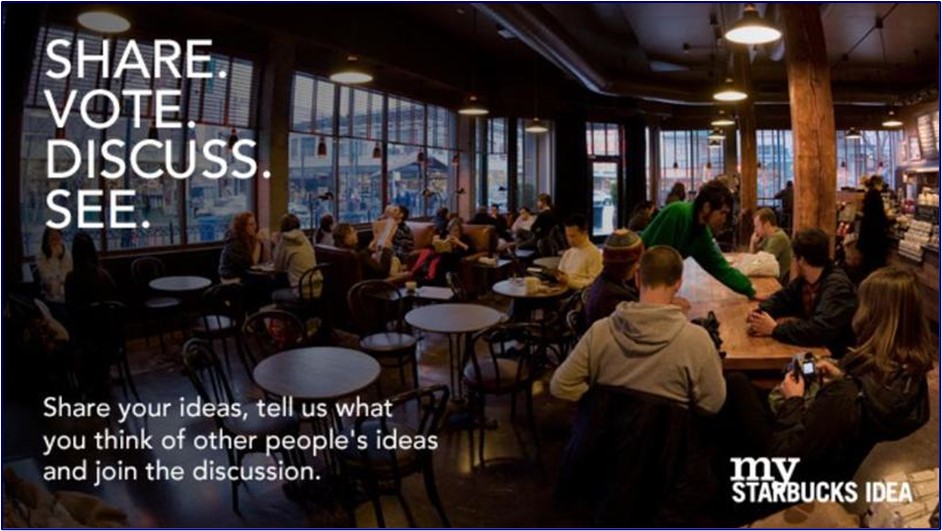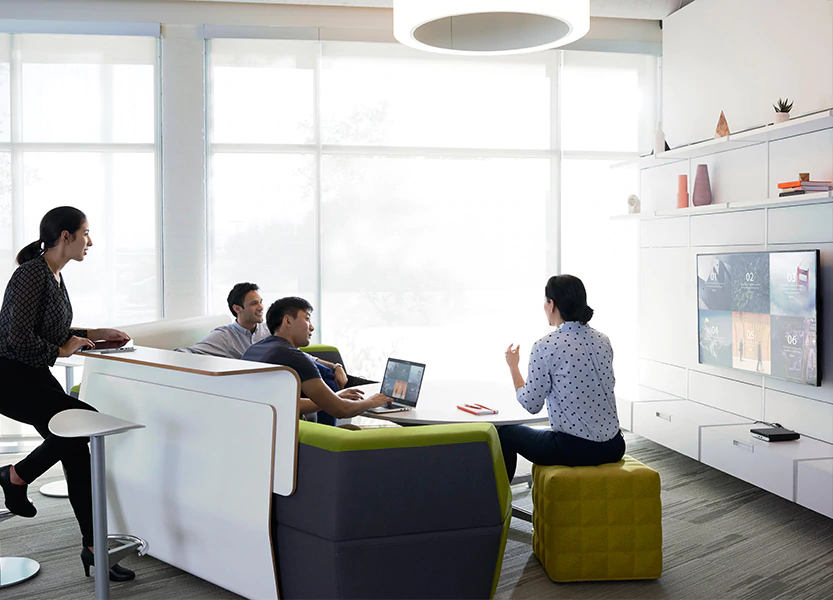Having previously defined the desired product experience, and having translated that into corresponding product attributes, attention can now be given to establishing a formal Design Strategy.
The Design Strategy is about how, specifically, the design of your product or service will deliver its intended product and brand experience. This is the birthplace of "how" innovation... finding novel and innovative ways of executing the design.
The act of establishing a Design Strategy takes the development process one step further in detail, establishing a clear and concrete plan of attack for the product's or service's design. What features will it have and not have? How should those features be arranged and presented? What will the user interface look and act like? What should the underlying technologies be? How do these relate to the offering's real or perceived value? Qualitatively, how should these features operate, and what are the key functional performance attributes of the offering, and what metrics are to be used to measure those? How do these rank against one another in terms of importance and priority? The Design Strategy seeks to answer these and other key questions required to properly design the offering.
Taking the lead on this work, our Designers work with client teams to explore the possible design space and from this develop a sound Design Strategy. This ensures high confidence that the end product or service will achieve its objectives and deliver the desired experience.
We use a well-refined process and an associated array of professional design practices to enable this work. This process consists of three distinct activity groups — Research, Concepting, and Distillation.
The practices described below relate primarily to the development of products. For more insights into how we approach the development of services, please refer to our
Service Innovation page.
This group consists of five practices of Design Research that are used according to the project's needs. These are:
In support of establishing new design strategies, we can, where needed, conduct tightly focused audits of current, new, and emerging technologies that relate to particular products under plan or development.
The objective of this focused technology audit is to uncover new technologies, and more specifically the most current and proven technologies available, that can be embedded into the product. To this end, we avail ourselves to a broad array of technology providers so as to ensure we thoroughly capture the best thinking around each technology, which we can then lead in applying to the endeavor.
In support of developing and vetting sound design strategies, we undertake Intellectual Property reviews. This has dual aims. First, it is an attempt to ensure that we have freedom to operate and do not pursue a design strategy that might suffer from patent infringement claims (a defensive action). Second, it is an attempt to identify the potential for securing IP protection of a particular design or technology (an offensive action). If so desired, it is also an opportunity to pursue a blocking IP strategy (a hyper–offensive action).
All Intellectual Property secured while working with Legacy Innovation Group remains the property of the client unless explicitly agreed otherwise. Legacy Innovation Group does not provide legal counsel of any sort.
Where it is necessary to verify specific market claims and/or better quantify particular attribute values, we are able to engage our Engineering Team and Test Facilities to undertake a full range of product (or surrogate product) testing. This work is referred to as User Science Research. The test results can then be incorporated into the product definition and/or marketing collateral as needed.
If contending design concepts have been developed and proof-of-concept prototypes built, one means of vetting these is to conduct studies that evaluate each concept's usability or performance against specific requirements. This process is commonly referred to as Usability & Performance Testing, and is typically executed in a semi–blind manner using representative participants. Our Design Team can facilitate such testing by using surrogate products and/or high–quality prototypes built to accurately reflect potentially subtle differences. Certain concepts will rise above others when tested against these requirements and relative to one another. As such, this is a useful method for ranking concepts and sifting out the weaker concepts to arrive at a much stronger concept.
So as to ensure that regulatory requirements governing the product are understood, so that the concepts being considered can be designed to be compliance with them, our Engineering Team will undertake a high level review of the regulatory environment. This will give the team an understanding of the external constraints they must work with, as well as some measure of confidence that the concepts being considered will have taken this into consideration.
This group consists of five design practices that are used in almost all cases, according to the project's needs. These are:
It should be noted that the work we do in association with Concepting can be very iterative in nature. In most cases, it will involve numerous rounds of building and user–testing prototypes in order to satisfactorily refine both the problem statement (our Point of View), and the solution being sought. Understanding this up front will help all parties know what to expect as we work through the endeavor together.
The Product Attribute Model is quite simply a visual and tabular model that – intermediate between the PX Framework and the Concept Development process – captures in sufficient detail the attributes of the offering that will create the intended experience and thus serve as its primary source of differentiation. It reflects, therefore, the intended brand and product positioning for the offering. Also, as a precursor to solving particular problems, it clearly identifies the problems that are to be solved later on in the Concept Development step. Much of its detail will borrow from the PX Framework's experience metrics (see Step 10 of our Experience Design Process).
Typical examples of product attributes will include feature sets, performance characteristics, intended markets, regulatory compliance requirements, cost, price & margin targets, intended production sites, and shared brand characteristics.
Quite often, a product line will involve a family of models in a tiered positioning relationship, otherwise known as a product model line–up, or MLU. In those cases, the Attribute Model will detail the attributes of each specific model.
Our Marketing Team works with clients to craft the Product Attribute Model prior to moving into the key Concept Development process. Having this model enables everyone on the team to understand what they are aiming for during concept development.
As part of the broader Market, Brand, and Offering Strategies, we must at this point establish some clear definition around the brand language to be associated with the product.
Brand language is encountered in three primary forms: descriptive brand language (DBL – the words used in the product marketing message), visual brand language (VBL – the product's aesthetic attributes), and experiential brand language (XBL – the product's usage attributes). The brand message associated with the offering must be reinforced by building consistency between these three forms of brand language (DBL, VBL, and XBL). Our Marketing and Design Teams will establish and document appropriate descriptive, visual, and experiential brand language that is coherent with one another and with the broader brand message and intended product experience.
As a starting point to begin thinking about visual design concepts and a possible VBL, we will typically lead an exercise to establish a Mood Board. This is a board (physical or virtual) having a collection of grouped images of other products highlighting specific design themes and cues. There will typically be several competing design themes being worked on the Mood Board. Not only do these images provide a point of reference, they also provide an element of inspiration where high–impact designs are featured. Eventually, one of these themes will emerge as the winning theme with which to move into more detailed design concepting work. This winning theme thereafter becomes the anchor point for the visual brand language, though of course the design aesthetic can change at any point in the process as the overall system design evolves.
Having defined an intended Product Experience, a corresponding Product Attribute Model, and a statement of Brand Language, the process is now ready to move deep into the Concept Development phase. All of the preceding work will have been leading up to this point.
Our Design Team, which by this point will have become broader and more diverse in its membership, will begin developing a series of competing product concepts that each hold the potential to satisfy the aforementioned requirements of experience, attributes, and brand language. Out of this process will arise an array of product concepts, each based on a particular architecture. Each concept will subsequently be critiqued and ranked according to how well it satisfies these collective requirements.
As an integral part of this work, we will build and user–test prototypes of these competing product concepts. This allows the team to be confident they have adequately diverged and converged around the correct problem statement, and adequately diverged and converged around the most optimal solution concept possible for that problem statement.
This process will typically iterate several times until a concept emerges that the team concurs has high potential for delivering the intended experience, attributes, and brand language.
Foundational to our concept development work is the use of Human Centered Design, or HCD. HCD seeks to draw out empathy for the needs of the user, whether articulated or hidden, so that we can create a design that meets all of those needs. HCD also has another powerful effect... because it invokes nonlinear thinking about how to address product use challenges, it leads to insights and ideas that basic brainstorming simply does not lead to. This often means the difference between an also–ran product and a truly innovative and impactful product.
One aspect of the product's design that will be crucial to achieving its intended experience is how it and its users interact and interface with one another, whether that occurs in the physical domain, the digital domain, or both. Generically this blends the practices of Human-Machine Interface (HMI) and User Interface / User Experience (UI/UX) Design. Both of these focus heavily on the cognitive and emotional interactions that take place – typically through Cognitive Task Analysis, as associated with Experience Psychology.
Our Design Team applies considerable effort toward defining and optimizing product interfaces to create designs that have a human feel, and thus touchpoints that achieve the intended experience. For this work, we employ the technical disciplines of Human Factors, Ergonomics, and UI/UX Design. Where appropriate, specialists in these areas are involved in the concepting phase to ensure that for whatever concepts being considered (and ultimately chosen), users will be able to optimally interact and interface with the final product.
When comparing competing concepts, it can be important to have a sense of the cost structure associated with each concept, including the Cost of Goods Sold, or COGS (direct material + direct labor), and the Capital Expense required to produce that concept. This is particularly true if the competing concepts are very different from one another (less so if they are very similar).
To achieve this, our Engineering Team develops a high–level Bill of Materials (BOM) for each concept and works with appropriate quoting sources and Finance Analyst to establish an approximate cost for each concept. This will give the team added confidence that they understand the costs associated with any trade–off decisions they have to make during concept selection.
In the process of developing new concepts, one key practice that we use is prototyping. This actually serves multiple purposes, and there are various forms of prototyping which each lend themselves to a particular purpose.
The first and most immediate purpose for prototyping is to help the Design Team make comparisons between competing concepts. The most effective tool for this is visual prototyping – high–quality sketches and renderings that enable the team to visually understand the different concepts.
A key subsequent purpose of prototyping is to enable the Design Team to test out various concepts on potential users so as to find those concepts – or particular attributes of those concepts – that most directly resonate with the intended users. For this, physical conceptual prototypes are used. In the case of digital products, this involves digital mockups with simulated functionality. Testing real prototypes against real use cases and real user expectations so as to observe real user reactions is an important tool in allowing the Design Team to ensure the concept(s) they are pursuing will in fact best meet users' needs, in keeping with good HCD practice.
We leverage both visual and physical prototypes, therefore, to ensure the Design Team is able to learn and converge on a truly winning design concept.
This is a single activity whose purpose is to distill all of the preceding Research and Concepting work, and then select the one final Design Concept / Strategy to move forward with.
Having amassed all of the preceding insights around the various competing design concepts, our task here is to distill all of this information down and select a winning concept. To lead clients in this process, we typically make use of the Pugh Concept Selection Matrix (CSM). In this context, we work with you to prioritize the previously established product experience metrics, product attribute requirements, and brand language requirements, and then we undertake an examination together of how well each concept satisfies those collective requirements. Based on this comparative evaluation, the aim is to select the one winning concept, and thus the winning Design Strategy, to carry forward into the final product development work.
Having at this point established the intended Design Strategy, the final step prior to moving into detailed engineering development is to capture all of the relevant information into a formal statement of product definition. This statement – the Product Definition Brief – will define the actual product in as much detail as is known at this point. This can include product architecture, feature sets, aesthetics, technical requirements, performance requirements, usability targets, reliability targets, regulatory requirements, cost and manufacturability requirements, and any other requirements known at this time. This documented package of information will provide the Engineering Team with a clear understanding of what the product must be and do in order to achieve its design intent.
Our Design and Engineering Teams work together with the client's team to develop this definition, and to ensure that it is correctly documented as a complete package. The client must review and approve the final Product Definition Brief prior to the team kicking off detailed engineering work.

CEOs come and CEOs go. Some are excellent. They generally ‘get it’. Others not so much. They really ‘don't get it’. What makes the difference between these?
READ MORE
There's an insidious debate that's bounced around for probably the better part of twenty years now. It's the debate of whether or not ‘innovation is everyone's job’...
READ MORE
Innovation Spaces – which can refer to any space intentionally designed to foster and facilitate good innovation work – come in all sorts, shapes, and sizes...
READ MOREWe partner with committed business leaders to make their organizations the driving forces in their markets.
CONTACT USSign up for our newsletter.
NEWSLETTER SIGN-UP